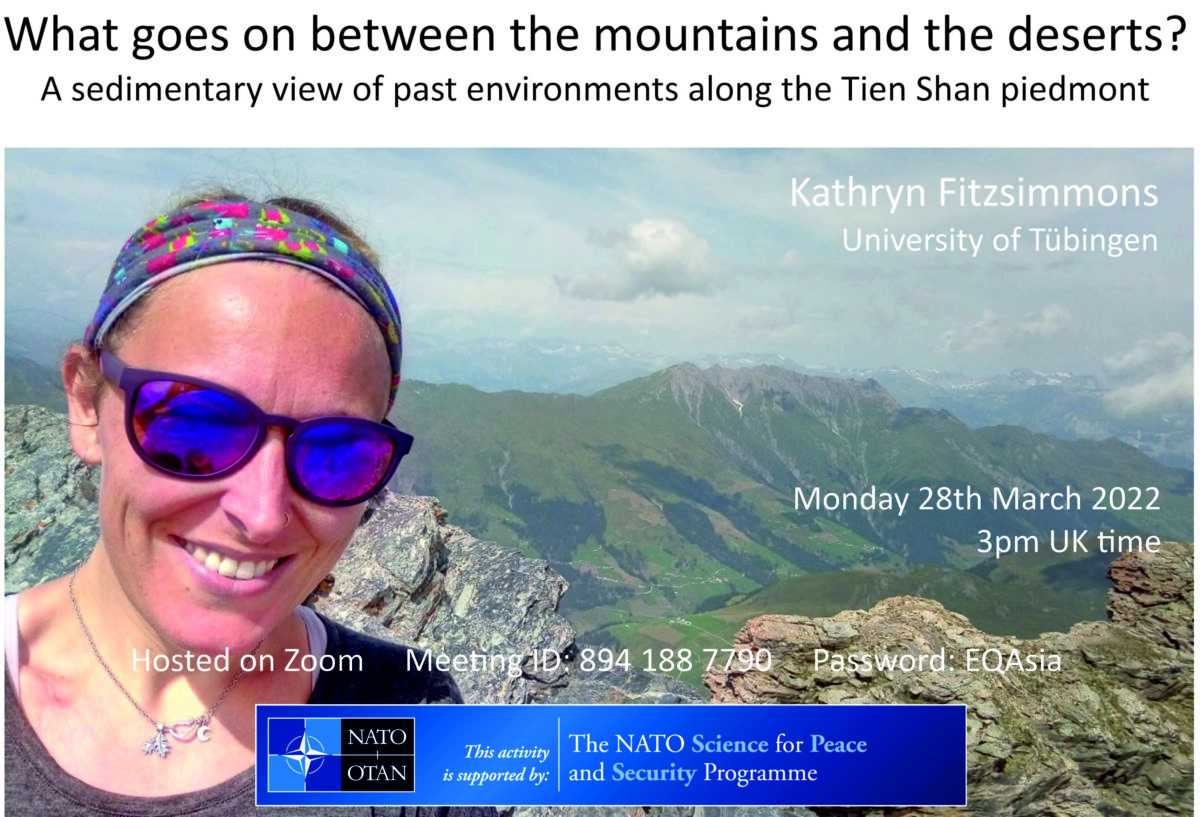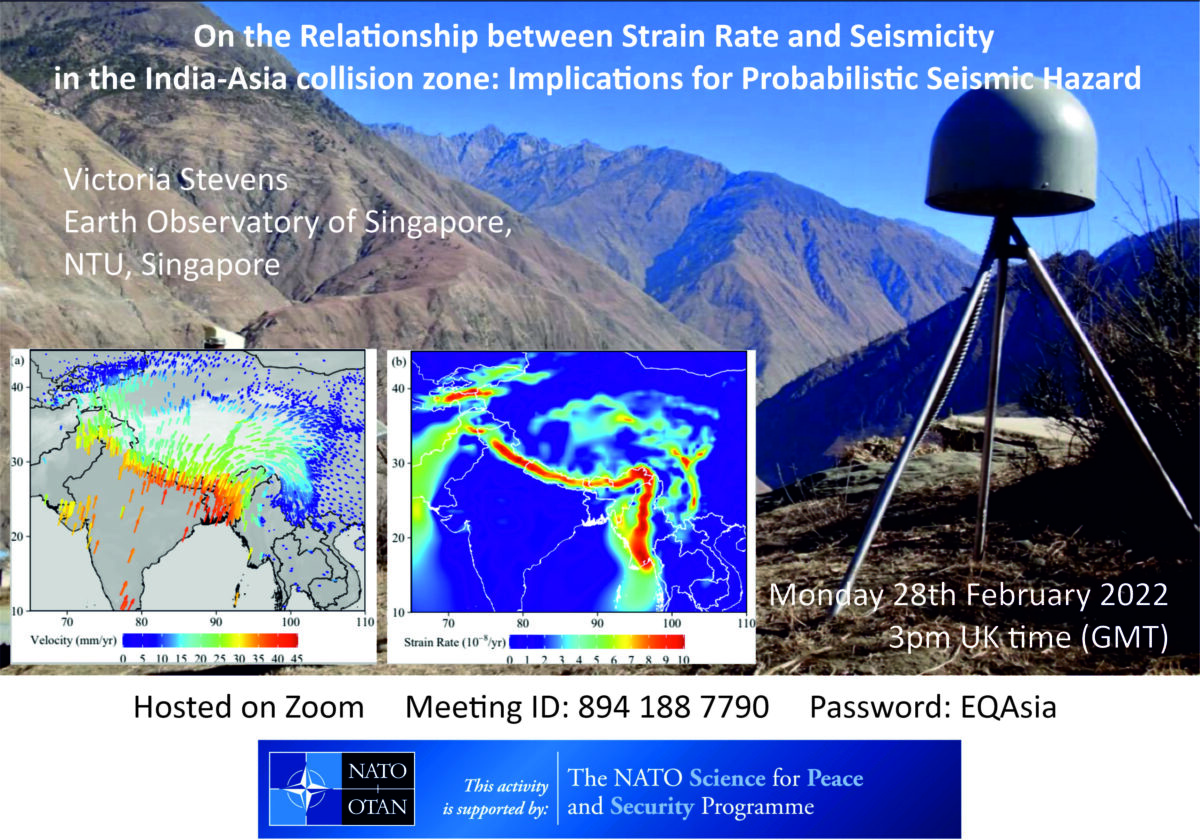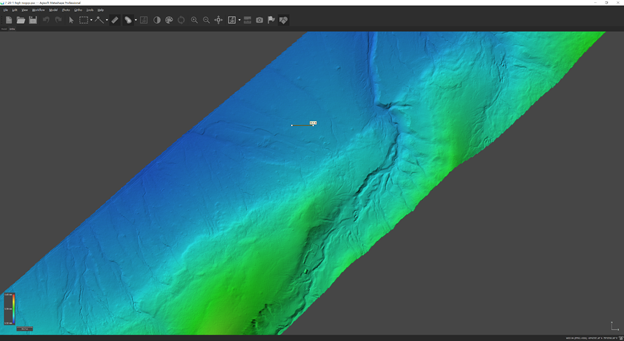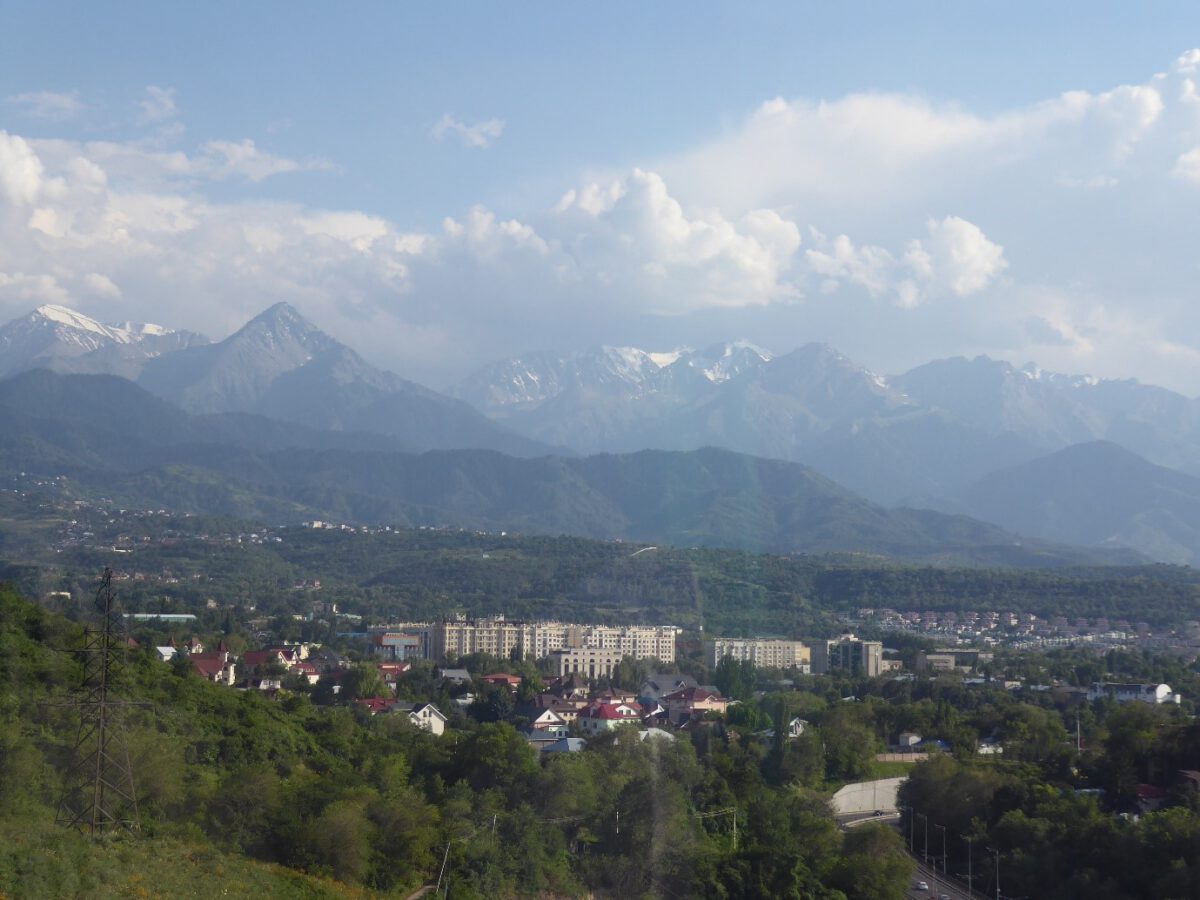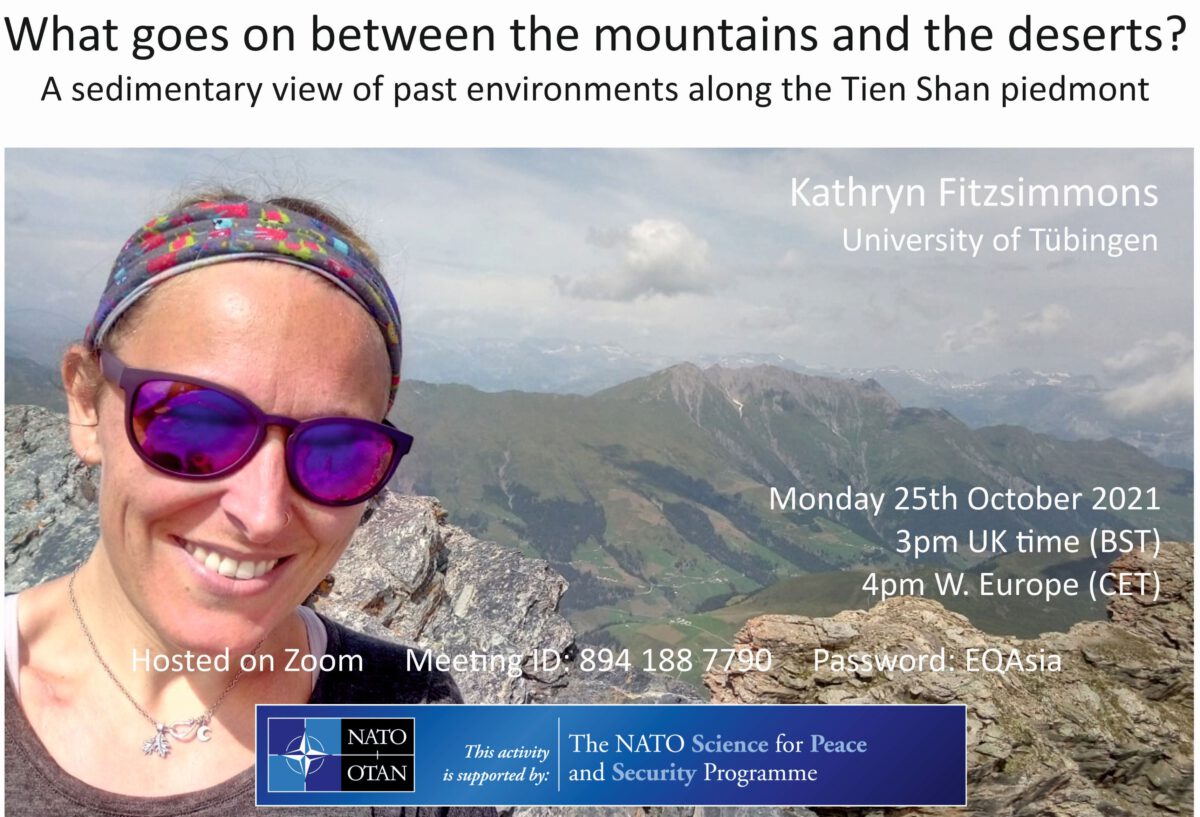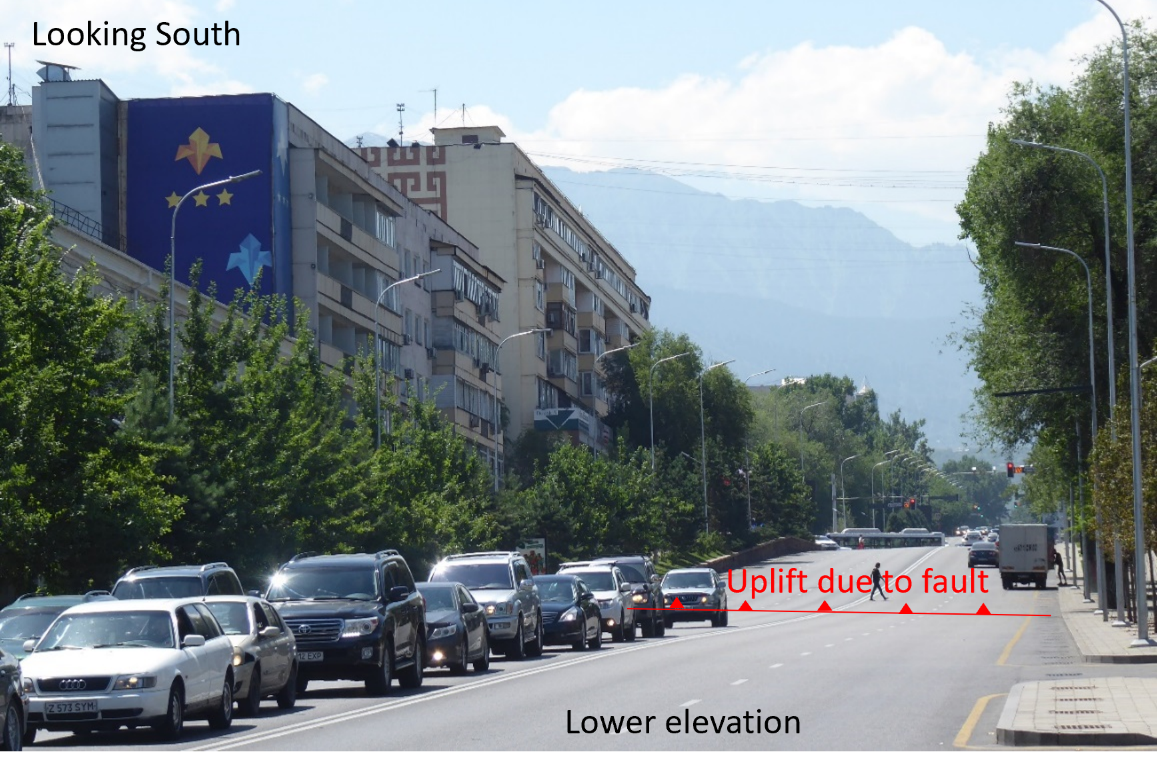On 28 March, 2022, Kathryn Fitzsimmons from the University of Tübingen gave a talk about What goes on between the mountains and the deserts? A sedimentary view of past environments along the Tien Shan piedmont in the framework of our NATO-funded project SPS G5690 – “Earthquake Hazard and Environmental Security in Kazakhstan and Kyrgyzstan”. In case you missed Kathryn’s presentation, here’s the video.
Watch this space for future talks, always on the last Monday of every month, and follow us on Twitter for updates: https://twitter.com/QuakesCentAsia
